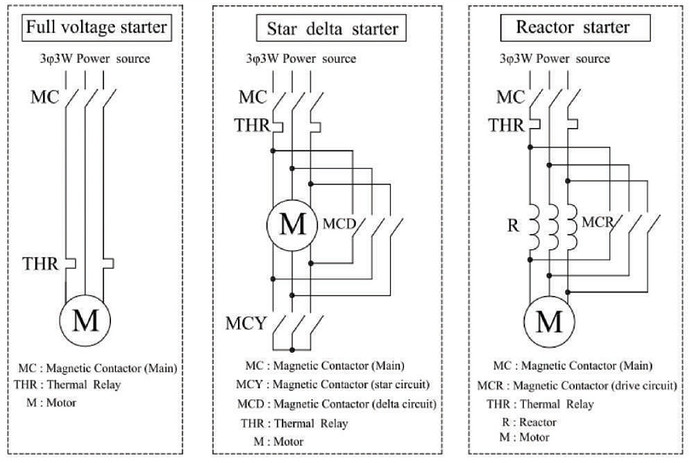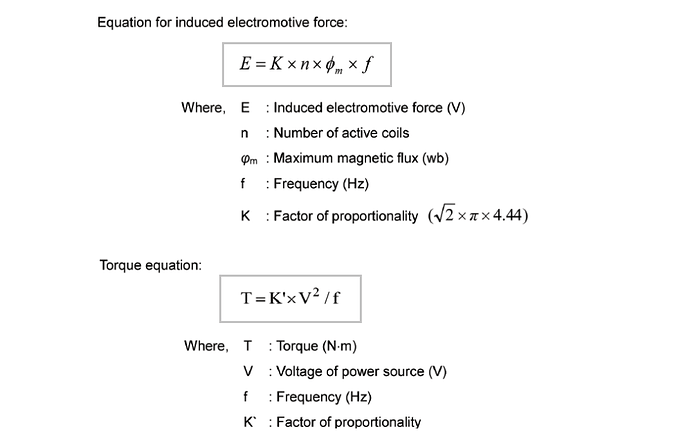An extremely large current of about five to eight times the rated current flows when a motor is started. The power factor is at an extremely low value of about 0.2 at the start.
The duration of the starting current is short, but the motor winding coil is subjected to thermal stress load as Joule heat. Voltage fluctuation occurs in the power system and its effect becomes more pronounced.
The starting method of three-phase induction motor includes a method of restricting current at start as mentioned above, and other methods described below.
Direct-on-line Starter
Power supply voltage is applied as-is, and a starting current which is several times the rated current flows. This starter is used in motors requiring comparatively small starting currents.
Star Delta Starter
1/√3 of power supply voltage is applied on the Y (star) connection winding at start, while Δ (delta) connection is used during operation. Compared to the full voltage starter, the starting current is one third and the starting torque is also one third.
Reactor Starter
The voltage to be applied to the motor at start is reduced by the reactor and full voltage is applied after the motor picks up speed, and is operated. The starting current can be restricted to a smaller value compared to the Y-Δ starting method.
The circuit diagram of some of the starting methods are shown in Figure.
Another starting method is to use a starting compensator.

